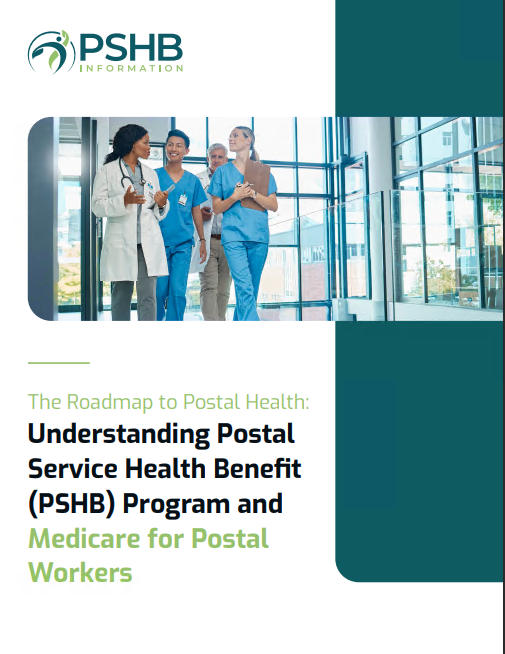Key Takeaways
-
Your coinsurance under the Postal Service Health Benefits (PSHB) program determines the percentage of costs you are responsible for after meeting your deductible. Understanding these percentages can help you better plan for medical expenses.
-
Different medical services, from hospital stays to prescription drugs, have varying coinsurance rates. Knowing which services require more out-of-pocket payments can help you maximize your health coverage.
Breaking Down Coinsurance in PSHB Plans
If you’re enrolled in a Postal Service Health Benefits (PSHB) plan, understanding coinsurance is key to managing your healthcare expenses. Coinsurance is the percentage of medical costs you must pay after meeting your plan’s deductible. It applies to various services, including hospital stays, specialist visits, and prescription medications.
Unlike copayments, which are fixed amounts for specific services, coinsurance is a percentage of the total cost. This means your expenses can vary depending on the type of care you receive and whether you use in-network or out-of-network providers.
How Coinsurance Works in PSHB
Once you meet your deductible, coinsurance kicks in. Here’s a general breakdown of how it works:
-
In-Network Services: You typically pay a lower percentage when using in-network providers, as they have agreed-upon rates with your plan.
-
Out-of-Network Services: Expect to pay a higher percentage for care received outside the plan’s network, sometimes up to double the in-network rate.
-
Preventive Care: Many PSHB plans cover preventive services at 100%, meaning you won’t owe anything for things like annual check-ups and screenings.
-
Specialist Visits: Coinsurance for specialists is usually higher than for primary care visits.
Coinsurance Rates for Common Services
Each PSHB plan has different coinsurance rates depending on the service. Here’s what you might expect:
Primary and Specialist Care
-
Primary care visits typically have lower coinsurance rates, making them more affordable.
-
Specialists, including cardiologists and dermatologists, may require higher coinsurance, increasing your out-of-pocket costs.
Hospital Stays and Emergency Care
-
Hospital admissions often come with significant coinsurance, especially if they extend beyond a few days.
-
Emergency room visits usually have higher cost-sharing, but urgent care centers may offer more affordable options.
Prescription Drugs
-
Generic medications usually have the lowest coinsurance, while brand-name and specialty drugs require higher contributions.
-
Some plans offer preferred pharmacy networks, where you can get prescriptions at lower costs.
Out-of-Pocket Maximums: The Safety Net
Coinsurance payments can add up quickly, but there’s a limit to how much you’ll pay in a given year. Once you reach your plan’s out-of-pocket maximum, the plan covers 100% of your covered medical expenses for the rest of the year. This includes your deductible, coinsurance, and copayments but does not include monthly premiums.
What Counts Toward the Out-of-Pocket Maximum?
-
Deductibles
-
Coinsurance
-
Copayments
-
Prescription drug costs (if applicable)
Understanding your plan’s out-of-pocket limit is crucial. Once you hit this threshold, you won’t have to worry about additional medical bills for the remainder of the year.
How to Minimize Coinsurance Costs
There are several ways to reduce what you owe in coinsurance:
Choose In-Network Providers
Sticking to in-network doctors and facilities ensures you pay the lowest coinsurance rates possible.
Use Preventive Care Services
Take advantage of fully covered preventive care services like flu shots and cancer screenings to avoid higher medical costs later.
Consider Generic Medications
When possible, opt for generic prescriptions instead of brand-name drugs to save on coinsurance.
Plan for High-Cost Procedures
If you expect to need surgery or ongoing treatment, check what your coinsurance obligations will be and plan accordingly.
Coinsurance vs. Copayments: Understanding the Difference
Many people confuse coinsurance with copayments, but they function differently:
-
Coinsurance: A percentage of the service cost you pay after your deductible is met.
-
Copayment: A fixed dollar amount you pay for specific services, regardless of total cost.
For example, you might have a $40 copay for a doctor’s visit but a 20% coinsurance for a hospital stay. Knowing when each applies can help you predict healthcare costs more accurately.
Coinsurance and Medicare Integration
If you’re retired and enrolled in Medicare Part B, your PSHB plan may work alongside Medicare to lower your coinsurance costs. Some PSHB plans reduce or even eliminate coinsurance for services covered by both Medicare and PSHB.
How Medicare Helps Reduce Coinsurance
-
Medicare pays first, and your PSHB plan covers secondary costs, reducing your out-of-pocket expenses.
-
Some PSHB plans waive or lower coinsurance for enrollees with Medicare Part B.
-
Prescription drug costs may also be lower through Medicare Part D Employer Group Waiver Plans (EGWP) offered by PSHB.
If you’re eligible for Medicare, coordinating benefits with your PSHB plan can save you money on healthcare expenses.
What Happens If You Reach Your Out-of-Pocket Maximum?
Once you’ve paid enough in deductibles, copayments, and coinsurance to hit your plan’s out-of-pocket maximum, your plan covers all remaining covered healthcare costs for the year. This provides financial protection, especially if you have ongoing medical conditions requiring frequent care.
What Doesn’t Count Toward Your Out-of-Pocket Maximum?
-
Monthly premiums
-
Non-covered services
-
Balance billing for out-of-network care
Reviewing Your Plan Each Year
PSHB plan details, including coinsurance rates, can change annually. That’s why it’s essential to review your plan every year during Open Season (from November 11 to December 13) to ensure your coverage meets your needs.
Things to Look for During Open Season
-
Did your coinsurance rates change?
-
Are your preferred doctors still in-network?
-
Have your prescription drug costs increased?
-
Is Medicare integration still offering the best value for your situation?
Being proactive about reviewing your plan ensures you’re not caught off guard by unexpected costs.
Make the Most of Your PSHB Plan
Understanding how coinsurance works in PSHB plans helps you manage your healthcare expenses more effectively. By staying in-network, taking advantage of preventive services, and coordinating benefits with Medicare, you can reduce your out-of-pocket costs.
If you have questions about your plan’s coinsurance rates or how Medicare can help, consider reaching out to a licensed agent listed on this website. They can provide guidance tailored to your specific situation.








